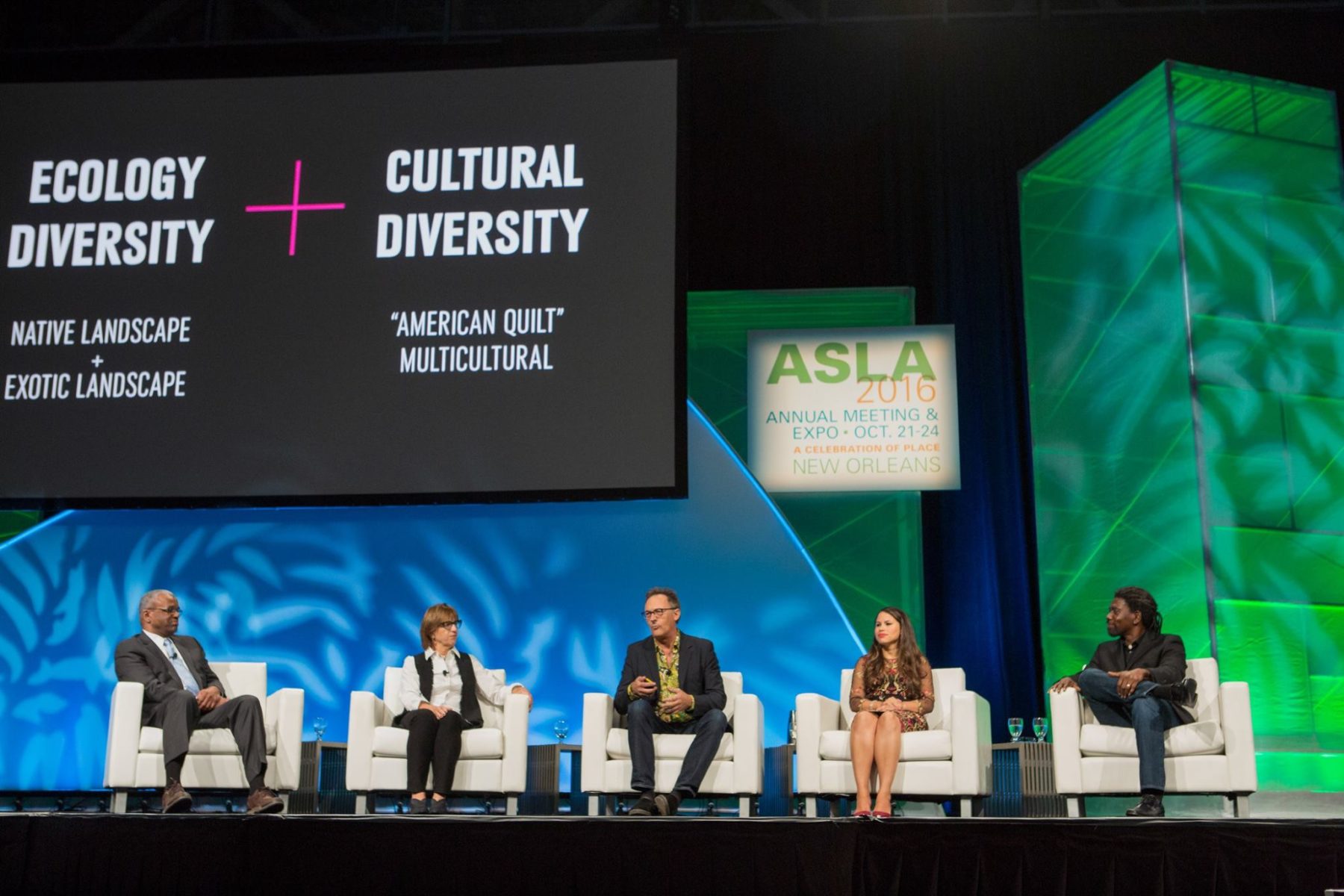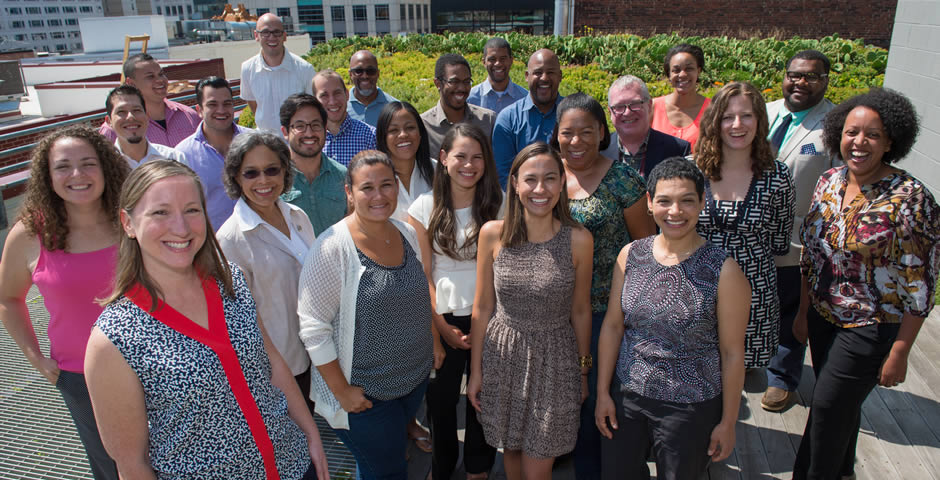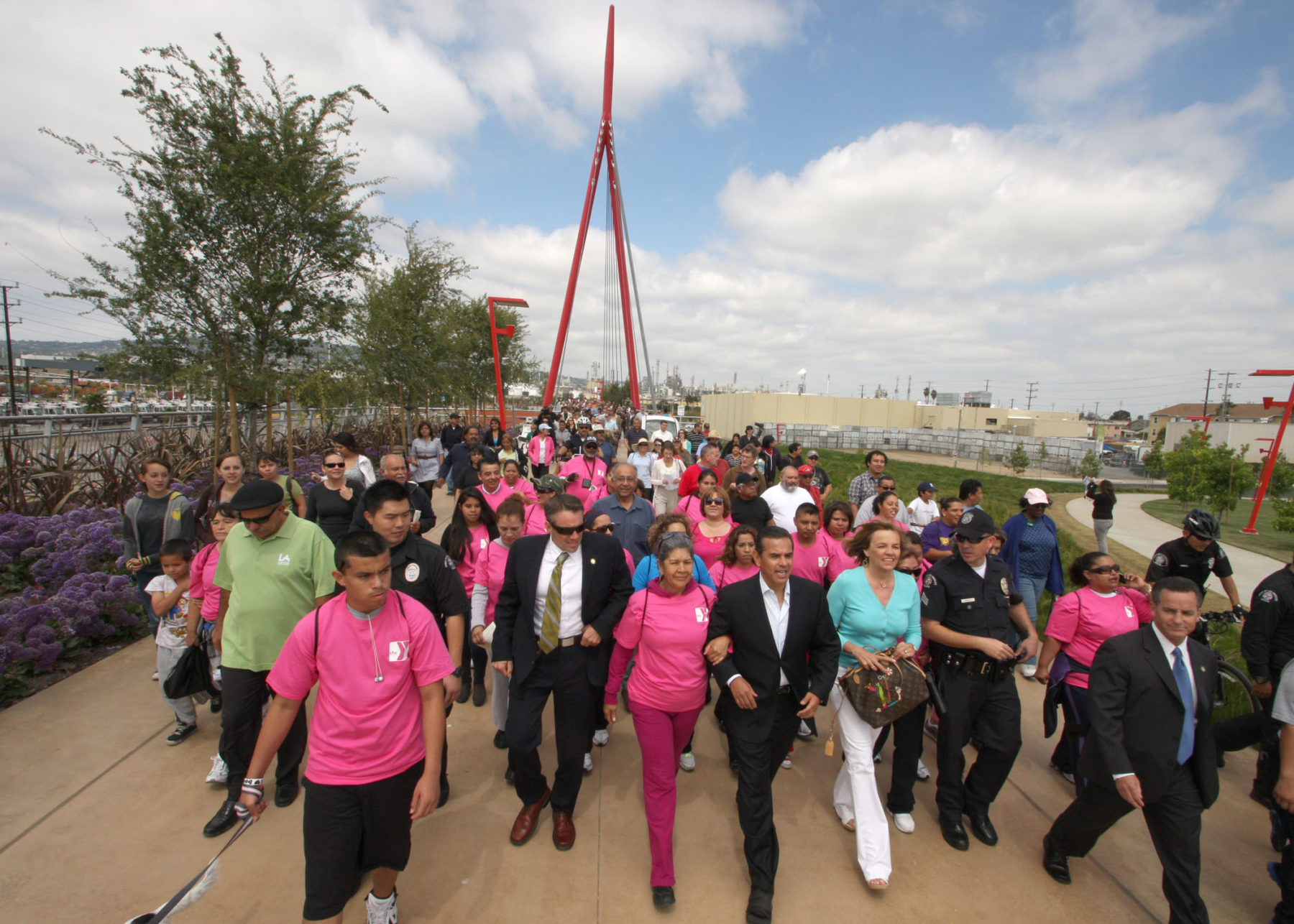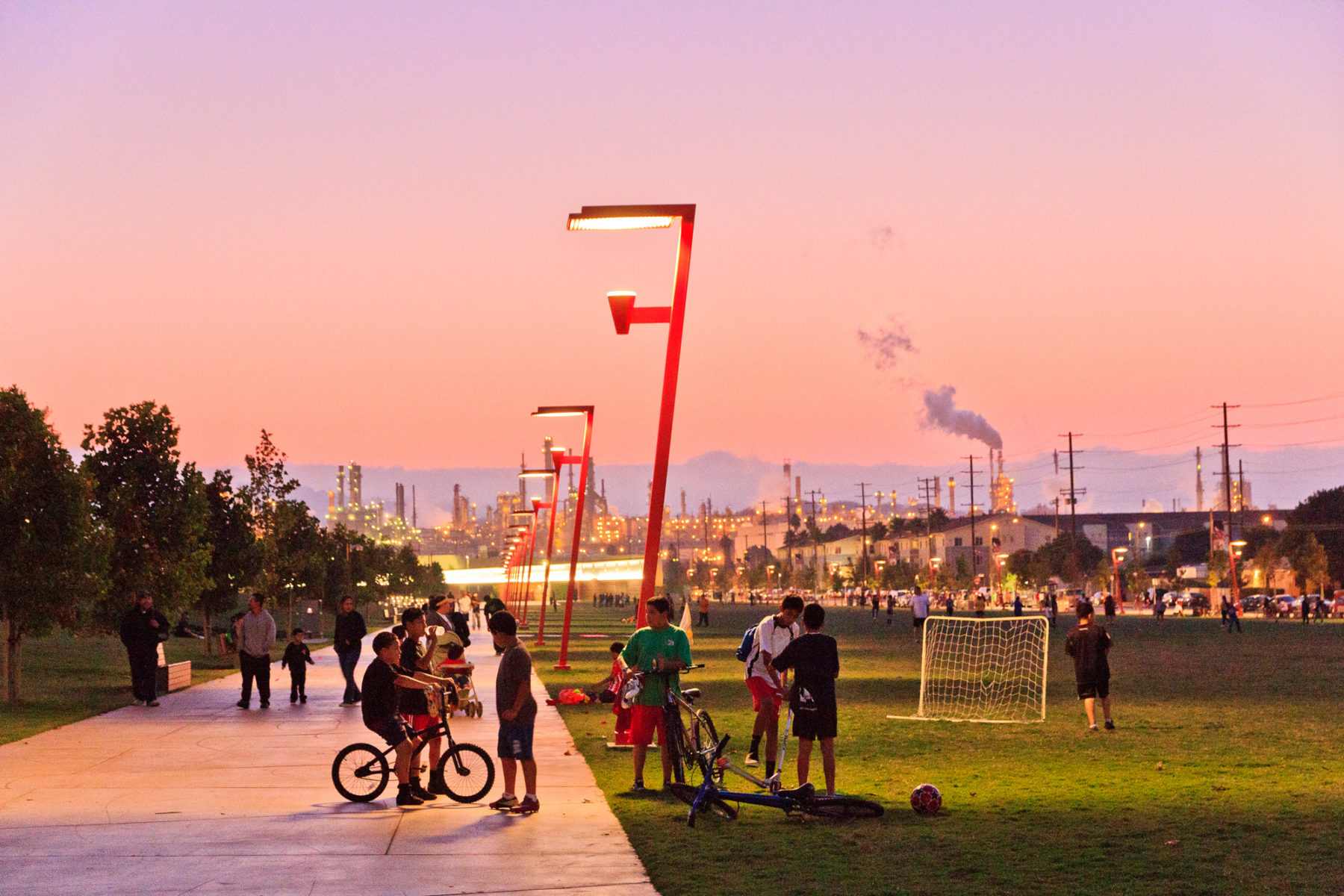Sasaki & LAF Co-Host Equity and Inclusion Panel
An all female panel takes on the topic of equity and inclusion with Sasaki and the Landscape Architecture Foundation (LAF)
 Sasaki
Sasaki

As many of us can attest, it was not an easy road to become a landscape architect. I was born in the Dominican Republic in a village with no running water or electricity and immigrated to New York City with my parents and younger sister when I was five. I grew up in an America of many colors, an America shaped by the ethically and culturally rich environments, defined by the ghettos my parents could afford. When I entered college I became acutely aware that I was an anomaly, the teenage Latina mother who made it to college. These experiences profoundly shaped my perspective on contemporary landscape architecture and public space.
This post was adapted from Diana Fernandez’s keynote talk at the American Society of Landscape Architects Annual Meeting and Expo in New Orleans. She spoke as a part of a panel discussing the importance of diversity in design and urban policy alongside speakers Kona Gray, ASLA, Ron Sims, Deputy Secretary for the U.S. Department of Housing and Urban Development (2009-2011), Mark Rios, FASLA, and Lucinda Sanders, FASLA.
The panel explored issues of diversity and design in a rapidly changing world. Drawing from the work of the ASLA Diversity Summit, panelists discussed how designers can rise up to the challenge of meeting the needs of constituents whom have historically been unrepresented in the discussion for urban policy and city making.
My participation in the ASLA Diversity Summit altered my perspective and demonstrated how to reassess the relationship between diversity and design. The Diversity Summit empowered my cohort of talented and diverse peers, who shared similar stories of hardships transformed into success through mentorship, to step into the roles of facilitating conversations and leading efforts that address and bring the topic of diversity in design to the forefront.

The ASLA Diversity Summit in 2014
As minority and immigrant populations are growing, it is becoming more and more apparent that traditional models of city development have not accounted for the needs or voices of all communities and residents. It’s time to reassess the practices that have perpetuated race, gender, environmental and socioeconomic inequality, and examine ways in which we can respond to and correct them.
Race is only part of the picture. Diversity in design means diversity of experience, perspective, and creativity. Truly engaging diversity in design is not about checking off boxes for race and gender quotas, it’s about translating those experiences and perspectives into design practices and methodologies that will better equip us to relate to the people we serve.

The opening celebration of Wilmington Waterfront Park near Los Angeles
My experience as a designer allowed me to work and develop partnerships with some of the most underserved communities in Philadelphia and Los Angeles. I am fortunate that my experience empowers me to advocate for more culturally sensitive design strategies such as the use of bright and colorful play equipment, instead of lighter taupe colors, to reflect the vibrancy and effervescence of the community at William Dick School in Philadelphia. My work at the Wilmington Waterfront Park was inspired by front porch typologies reflective of the Los Angeles vernacular where sitting on your front stoop is an experience in celebrating public space. Understanding the unique typologies of the communities served through design is essential in successfully and articulately defining the future of place.

Wilmington Waterfront Park
As landscape architects, the challenge for all of us is to rise to the charge set forth by the needs of the people we serve, a charge to holistically embrace and promote diversity through employment opportunities, leadership, promotion, and sponsorship, and to engage in active awareness campaigns promoting our profession and all of its colors to young children of all backgrounds.
Darnell Moore’s essay on “The Just City” articulates this contemporary call to action. “A just city is a space where one’s hued flesh does not determine one’s full or limited access to equity and safety in communities where he or she lives and works.”
Top image courtesy of American Society of Landscape Architects.
An all female panel takes on the topic of equity and inclusion with Sasaki and the Landscape Architecture Foundation (LAF)
Our Caitlyn Clauson and John McKnight, Dean of Institutional Equality and Inclusion at Connecticut College, penned an article in SCUP Journal on the history of campus diversity initiatives, and how designers and administrators alike can create a welcoming and inclusive campus environment